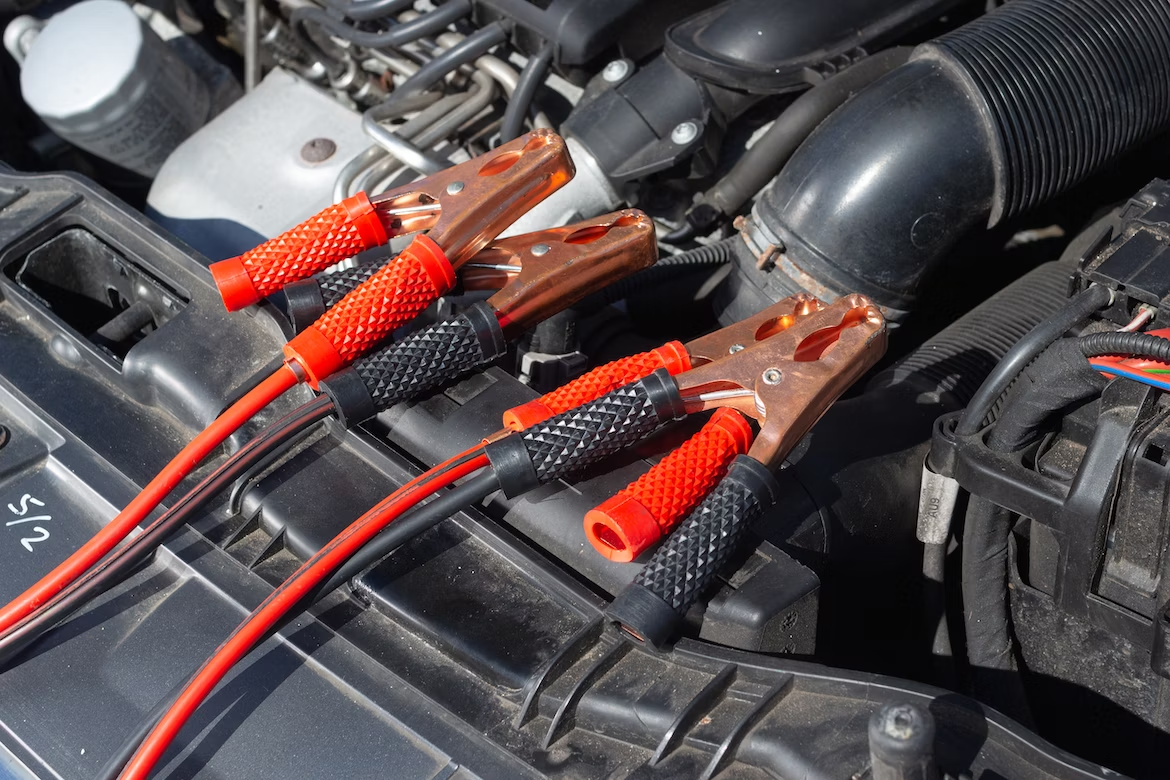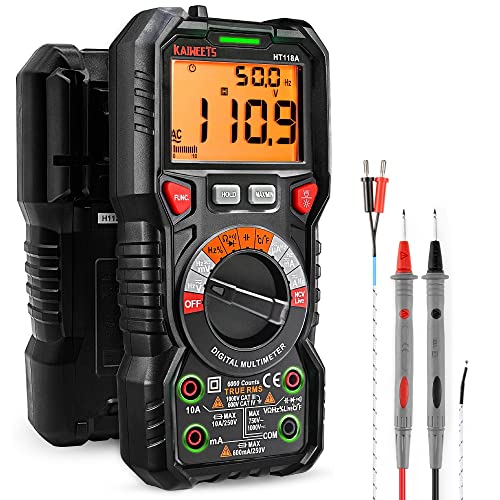A flat battery in your lawn mower can be frustrating. After all, it prevents you from using your equipment, whether that be cutting the grass or keeping your driveway clear of snow.
Luckily, there’s a convenient solution that can save you time and effort — jump-starting your lawn mower with a car battery. Yes, it’s possible.
But before you dive into this process, it’s crucial to understand the voltage system and battery details of your mower to ensure compatibility.
In this comprehensive guide, we will walk you through all the necessary precautions, proper jump-starting techniques, and maintenance tips to efficiently revive your lawn mower using a car battery.
Following our step-by-step instructions and jumper sequence will help you get your mower up and running again in no time.
Let’s get started.
Safety Precautions
When working with electrical systems, safety should always be the priority. Riding mowers operate on a 12-volt system, so there is a risk of electric shock if proper precautions aren’t taken.
Before getting to work on your lawn mower, remember to wear gloves and eye protection.
Gloves will protect your hands from any potential sparks or acid that may be present on the battery terminals. On the other hand, eye protection will shield your eyes from any debris that may fly off during the jump-starting process.
Additionally, ensure the battery terminals are clean and in good condition. Dirty terminals can hinder power flow and prevent successful jump-starting.
If you notice any buildup or corrosion, cleaning them before proceeding is essential. Baking soda mixed with water can help neutralize acid and remove corrosion effectively.
Once you have ensured your safety gear is in place and the battery terminals are clean, you can proceed.
Replacing Damaged Terminals
Replacing damaged terminals is like giving the battery a fresh set of shoes, ensuring a strong and secure connection for optimal power flow.
To replace damaged terminals on your riding mower’s battery, start by disconnecting the negative cable from the battery using a wrench or pliers. Then, remove any protective covers or boots from the terminal and carefully loosen and remove the nut holding it in place.
Next, clean any corrosion from both the terminal and cable end using a mixture of baking soda and water. It will neutralize acid buildup and help remove stubborn corrosion.
Once clean, install the new terminal and reconnect the positive terminal, followed by the negative terminal.
Repeat this process for each damaged terminal on your mower’s battery.
Using Good-Quality Jump Leads
Jump-starting a lawn mower with a car battery is possible, but it’s important to use good-quality jump leads for a safe and effective connection.
Here are three key reasons why using good-quality jump leads is crucial:
- Reliable Power Transfer: Good-quality jump leads are designed to handle high currents without overheating or losing power. They have thick cables with low resistance, allowing for efficient transfer of electricity from the car battery to the lawn mower’s battery.
- Secure Clamping: High-quality jump leads come with strong and sturdy clamps that securely attach to the battery terminals of both the car and the lawn mower. These clamps provide a tight connection, minimizing any chance of loose wiring or accidental disconnection during the jump-start process.
- Safety Features: Good-quality jump leads often come with built-in safety features like surge protection and reverse polarity prevention. Surge protection safeguards against voltage spikes that could damage sensitive electrical components in both vehicles. Conversely, reverse polarity prevention ensures you connect the positive terminal of one battery to another correctly, preventing dangerous short circuits.
Following Jumper Sequence
Following proper sequence when connecting the cables is crucial for a successful and safe jump-start.
When jump-starting a lawn mower with a car battery, it’s paramount to connect the jumper cables in the correct order. This sequence minimizes the risk of electrical shock or damage to either vehicle’s electrical system.
Follow these steps carefully:
- Start by turning off both the car engine and lawn mower ignition switch. It will prevent any accidental sparks or power surges during the connection process.
- Connect one end of the positive (red) jumper cable to the positive terminal of the car battery.
- Next, attach the other end of the same positive (red) jumper cable to the positive terminal of the lawn mower battery, making sure it is tightly connected.
- Now, attach one end of the negative (black) jumper cable to the negative terminal of the car battery.
- Here comes an important step: instead of connecting directly to your lawn mower’s negative terminal, find a suitable grounding point on your lawn mower’s frame away from its battery and engine components. Attach this end of your negative (black) jumper cable securely.
- Once all connections are made correctly, try to start your lawn mower and let it run for a few minutes.
After your lawn mower works as intended, turn it off and remove the jumpers in reverse order.
Remember that clamping that final clamp directly onto your lawn mower’s negative pole can lead to dangerous sparks or even damage electronic components due to sudden power surges.
Testing With a Voltmeter
If you’re unsure, you can effectively determine the voltage of your riding mower’s battery using a voltmeter. It is a handy tool that measures the electrical potential difference between two points in an electric circuit.
- To begin testing, ensure your riding mower is turned off, and the ignition key is removed to prevent accidental starts or electrical shocks.
- Locate the battery on your riding mower. Depending on the make and model of your machine, it can be placed in various locations.
- Once you’ve located the battery, inspect the terminals for any signs of corrosion or damage. If there is corrosion present, use a mixture of baking soda and water to neutralize the acid and carefully clean the terminals using a wire brush or toothbrush.
- Next, set your voltmeter to DC voltage mode with a range suitable for 12 volts. Take note that some volt meters may have different settings based on their design and manufacturer’s instructions.
- Carefully connect the positive (red) lead from the voltmeter to the positive terminal on your riding mower’s battery. Similarly, connect the negative (black) lead from the voltmeter to the negative terminal on your battery.
- Once both leads are securely connected, turn on your voltmeter and observe its reading. A fully charged 12-volt battery should read around 12.6-12.8 volts when not under load. If you get a lower reading than this, it could indicate that your battery needs recharging or replacement.
Alternative Options
Now, let’s talk about other ways to give your riding mower’s battery a much-needed boost.
One option is to use a portable power pack, resembling a small suitcase with built-in jumper cables. This compact and convenient device can provide the necessary power to jump-start your lawn mower without the need for another vehicle.
Here’s how it works:
- Connect the power pack: Locate the positive and negative terminals on your mower’s battery. The positive terminal is usually marked with a red color or a ‘+,’ while the negative terminal is typically black or marked with a ‘-.’ Ensure that both terminals are clean and free of corrosion. Then, connect the corresponding jumper cable clamps from the power pack to the respective terminals on your mower’s battery.
- Power up: Once you’ve securely attached the jumper cables, turn on the portable power pack according to its instructions. Some models may require you to press a button or flip a switch to activate the power flow.
- Start your mower: With everything properly connected and powered up, try starting your riding mower as you normally would. If all goes well, you should hear the engine roar back to life! Keep in mind that it may take a few attempts before your mower starts, especially if the battery is completely drained.
Using a portable power pack offers several advantages over other methods of jump-starting your lawn mower’s battery.
For instance, it eliminates the need for another vehicle, making it more convenient when you’re not near any cars or trucks.
Further, these devices are compact and lightweight, making them easy to store and transport in case of emergencies.
A trickle charger is another excellent alternative for maintaining battery life. This device is quite affordable, often costing around 40 dollars.
Yet, this simple tool is also versatile. You can use it both for your car battery and your mower batteries.
If you aim to carry out the first major spring cut, connect the trickle charger to your mower’s battery at least a day in advance.
Trickle charging a lawnmower battery is not a quick process. The time it takes can vary greatly, from half a day to even a few days. This duration depends on several factors.
One such factor is the type of trickle charger you use. Another is the size of your lawnmower’s battery. The type of battery is also a crucial aspect. Finally, the initial energy level in the battery plays a role too.
The Bottom Line
Jump-starting a lawn mower with a car battery is indeed possible and can be a convenient solution when faced with a dead battery.
However, it’s crucial to prioritize safety and ensure compatibility between the voltage systems and battery details of both the mower and the car.
Following the proper jump-starting techniques outlined in this guide will help you successfully revive your mower.
Remember that while jump-starting with a car battery can be an effective solution in most cases, there may be alternative options available depending on your specific situation.
For example, some lawn mowers may have built-in electric start features or ports for external power sources like portable chargers.
Exploring these alternatives can provide additional convenience and flexibility when dealing with a flat battery.
Good luck!
Frequently Asked Questions
Can I jump-start a riding mower using a car battery with a higher voltage system?
No, you cannot jump-start a riding mower using a car battery with a higher voltage system. It is important to use a battery that matches the voltage system of the mower to avoid damaging the electrical components.
Is it necessary to remove the mower’s battery from the vehicle before jump-starting?
Before jump-starting a lawn mower, it is not necessary to remove the battery from the vehicle. Still, you should take safety precautions and make proper jumper cable connections to avoid damaging the mower or battery.
Can I use regular tap water instead of baking soda and water to clean the battery terminals?
Regular tap water is not recommended for cleaning battery terminals. Baking soda and water are preferred because they effectively neutralize acid and remove corrosion. This ensures optimal power flow and helps maintain the battery’s performance.
What should I do if I accidentally connect the jumper cables to the wrong battery terminals?
If you accidentally connect the jumper cables to the wrong battery terminals, immediately disconnect them. Reversing the polarity can damage the electrical system, so check for blown fuses or other signs of damage and consult a professional if needed.
Can I use a battery charger instead of jump-starting the mower with another vehicle?
Yes, you can use a battery charger instead of jump-starting the mower with another vehicle. Make sure to follow the manufacturer’s instructions for connecting and charging the battery to avoid any damage or safety risks.
Was it helpful?

Enamored with the world of golf Jack pursued a degree in Golf Course Management at THE Ohio State University. This career path allowed him to work on some of the highest profile golf courses in the country! Due to the pandemic, Jack began Inside The Yard as a side hustle that quickly became his main hustle. Since starting the company, Jack has relocated to a homestead in Central Arkansas where he and his wife raise cattle and two little girls.











